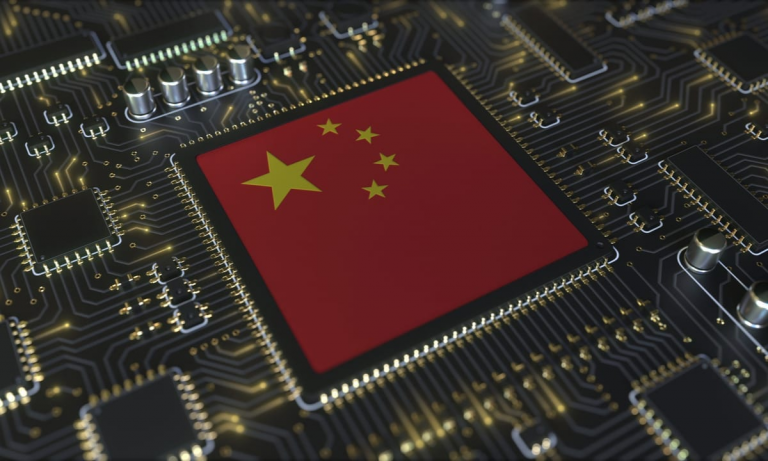
China will still outpace all other regions in 2025 in investments toward semiconductor manufacturing equipment, despite a sharp fall in projected spending, cementing its lead in a field where geopolitical tensions are reshaping global dynamics.
This is according to a new report from SEMI, a global industry group representing electronics design and manufacturing supply chains, which forecasts global chip equipment spending will climb to $110 billion in 2025, up two percent from this year, driven largely by demand for tools essential to building chips for artificial intelligence.
SEMI expects the AI boom to further accelerate capital spending in 2026, with global investments forecast to rise by another 18 percent.
Register for Tekedia Mini-MBA edition 19 (Feb 9 – May 2, 2026): big discounts for early bird.
Tekedia AI in Business Masterclass opens registrations.
Join Tekedia Capital Syndicate and co-invest in great global startups.
Register for Tekedia AI Lab: From Technical Design to Deployment (next edition begins Jan 24 2026).
China is expected to lead the charge despite a 24 percent drop in investment compared to 2024. Spending by Chinese manufacturers is projected to reach $38 billion in 2025, down from $50 billion this year, yet still well ahead of Korea ($21.5 billion) and Taiwan ($21 billion), where giants like Samsung, SK Hynix, and TSMC are expanding chip output.
The United States and Japan are forecast to each spend $14 billion, while Europe is expected to lag behind with $9 billion.
Chinese Firms Fill Nvidia Vacuum
China’s lead in equipment investment comes amid intensifying efforts to reduce its dependence on U.S. technology, particularly in light of Washington’s restrictions on chip exports.
Huawei Technologies, one of China’s most prominent tech firms, is set to begin mass shipments of its new 910C AI chip as early as May, according to sources familiar with the matter, quoted by Reuters. The development comes at a critical juncture for Chinese AI companies, many of which have been cut off from Nvidia’s latest offerings.
Last year, Huawei had quietly distributed samples of the 910C to Chinese tech firms and began taking orders. Now, with Washington requiring Nvidia to obtain export licenses before selling its H20 AI chips in China, Huawei is moving to meet domestic demand.
The 910C chip, which functions as a GPU, is seen as an architectural evolution of Huawei’s earlier 910B. Engineers familiar with the design said the new chip combines two 910B processors in a single package, delivering performance comparable to Nvidia’s H100—once the gold standard in AI computing.
It boasts double the computing power and memory of its predecessor, along with broader support for AI workloads. While not a technological leap, it reflects a pragmatic workaround: optimizing what is available in a market cut off from the most advanced Western tech.
Washington’s Crackdown Fuels Local Innovation
The U.S. has steadily tightened its grip on China’s access to cutting-edge AI chips, citing national security concerns. The H100, for instance, was banned from being sold to Chinese entities in 2022 before its commercial debut. The ban list now includes the H20 and the yet-to-be-released B200.
Washington’s latest move has left a wide opening in China’s lucrative AI market. “Huawei’s Ascend 910C GPU will now become the hardware of choice for AI model developers and for deploying inference capacity,” said Paul Triolo, partner at consulting firm Albright Stonebridge Group.
That sentiment reflects a growing shift. Huawei, along with local players like Moore Threads and Iluvatar CoreX, is gradually occupying the space once dominated by Nvidia.
However, sourcing remains complex. While Huawei has increased its in-house chip capabilities, some of the 910C’s components are reportedly manufactured by China’s Semiconductor Manufacturing International Corp (SMIC) using its N+2 7nm process—though with relatively low yields.
In another twist, at least part of the 910C chips may be based on designs produced by Taiwan’s TSMC for Chinese AI startup Sophgo. That revelation has drawn attention from U.S. regulators, given that TSMC, under pressure from Washington, cut off business with Huawei in 2020. The U.S. Commerce Department is reportedly investigating TSMC’s past work with Sophgo after a chip it made was found embedded in Huawei’s earlier 910B unit.
TSMC maintains it hasn’t supplied Huawei since mid-September 2020 and insists it complies with international export regulations.
Global Giants Still Dominate Equipment Supply
While Chinese players like Naura, AMEC, and Huawei’s chip subsidiary SiCarrier are growing, the market is still led by non-Chinese giants. ASML, the Dutch powerhouse that dominates the lithography segment, expects 2025 sales between €32 billion and €38 billion—giving it more than 25 percent of the entire market.
Other top suppliers include Applied Materials, Lam Research, KLA, and Japan’s Tokyo Electron, all of which continue to play critical roles in chip fabrication across the globe.
But China’s aggressive spending and policy support point to a long-term strategy. While the numbers for 2025 show a decline in investment, the overall trend suggests Beijing’s ambition to secure chip self-sufficiency is still very much in motion—even if it must go the long way around.
With AI as the main driver and sanctions as a key motivator, China’s chip race is likely to remain at the center of global tech geopolitics in the years ahead.



